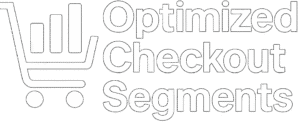When it comes to e-commerce, the checkout process is the final hurdle between your customer and a successful purchase. Yet, it’s often where potential buyers abandon their carts, leading to lost sales. Enter checkout segmentation, a game-changing strategy that helps businesses tailor their checkout experience to match the diverse needs of their customers. In this article, we’ll dive into the world of checkout segmentation, exploring its benefits and offering tips to master this crucial aspect of checkout optimization.
What is Checkout Segmentation?
Checkout segmentation involves dividing your customer base into distinct groups based on specific characteristics or behaviors. These segments can be as simple as new versus returning customers, or more complex, like international versus domestic buyers. The goal? To deliver a checkout experience that’s as personalized and seamless as possible.
Why Checkout Customization Matters
Not all customers are created equal. A one-size-fits-all checkout process might work for some, but it’s likely to drive others away. By customizing the checkout experience, you can:
- Reduce Cart Abandonment: Address specific customer pain points, making it less likely they’ll leave before completing their purchase.
- Improve User Experience: Tailor the checkout flow to suit different customer segments, ensuring a smoother, more intuitive process.
- Boost Conversion Rates: Provide a personalized experience that encourages more customers to follow through with their purchases.
Steps to Master Checkout Segmentation
1. Identify Your Segments
Start by analyzing your customer data to identify key segments. Consider factors like purchasing history, location, device usage, and any other relevant behaviors. For instance, segmenting based on whether a customer is shopping from a mobile device or desktop can help you optimize the checkout experience for each platform.
2. Tailor the Checkout Experience
Once you’ve identified your segments, it’s time to customize the checkout process. This might mean offering different payment options based on geographic location, presenting personalized upsells to repeat customers, or simplifying the checkout form for mobile users. The key is to make the process as frictionless as possible for each segment.
3. Test and Optimize
Don’t set it and forget it! Continuously test different elements of your segmented checkout process to see what works best. Use A/B testing to experiment with changes and gather data on how these affect conversion rates. Remember, optimization is an ongoing process.
Common Challenges and Solutions
While the benefits of checkout segmentation are clear, it’s not without its challenges. Here are a few common hurdles and how to overcome them:
- Data Overload: With so much data available, it can be overwhelming to decide which segments to focus on. Start small, and gradually expand as you become more comfortable with the process.
- Technical Limitations: Ensure your e-commerce platform allows for the necessary customizations. If not, consider integrating third-party tools that offer greater flexibility.
- Maintaining Consistency: While customization is crucial, ensure the core elements of your brand remain consistent across all segments to avoid confusion.
Conclusion
Mastering checkout segmentation is all about understanding your customers and delivering a checkout experience that meets their unique needs. By doing so, you’re not just improving conversion rates—you’re building a more loyal customer base.
